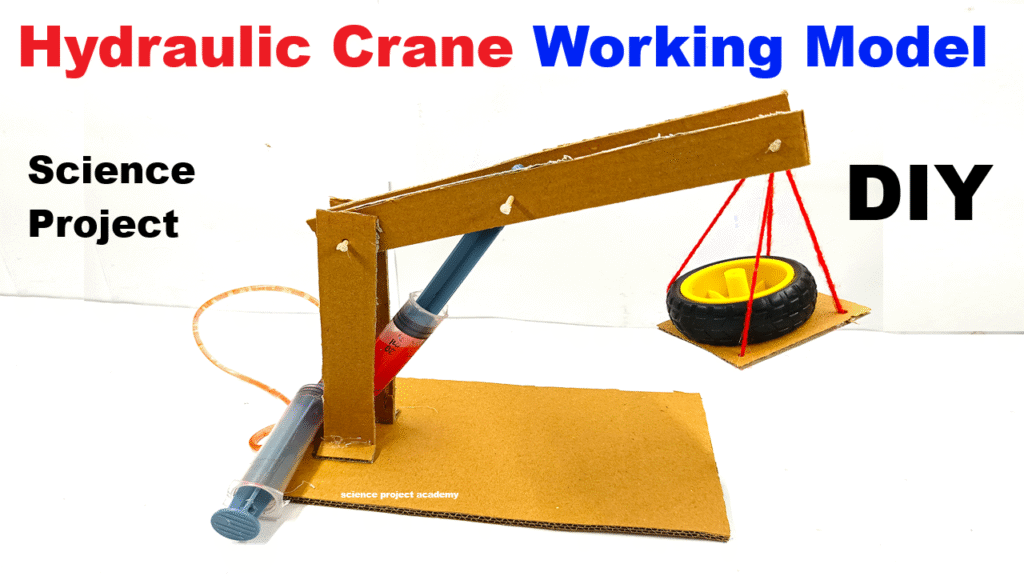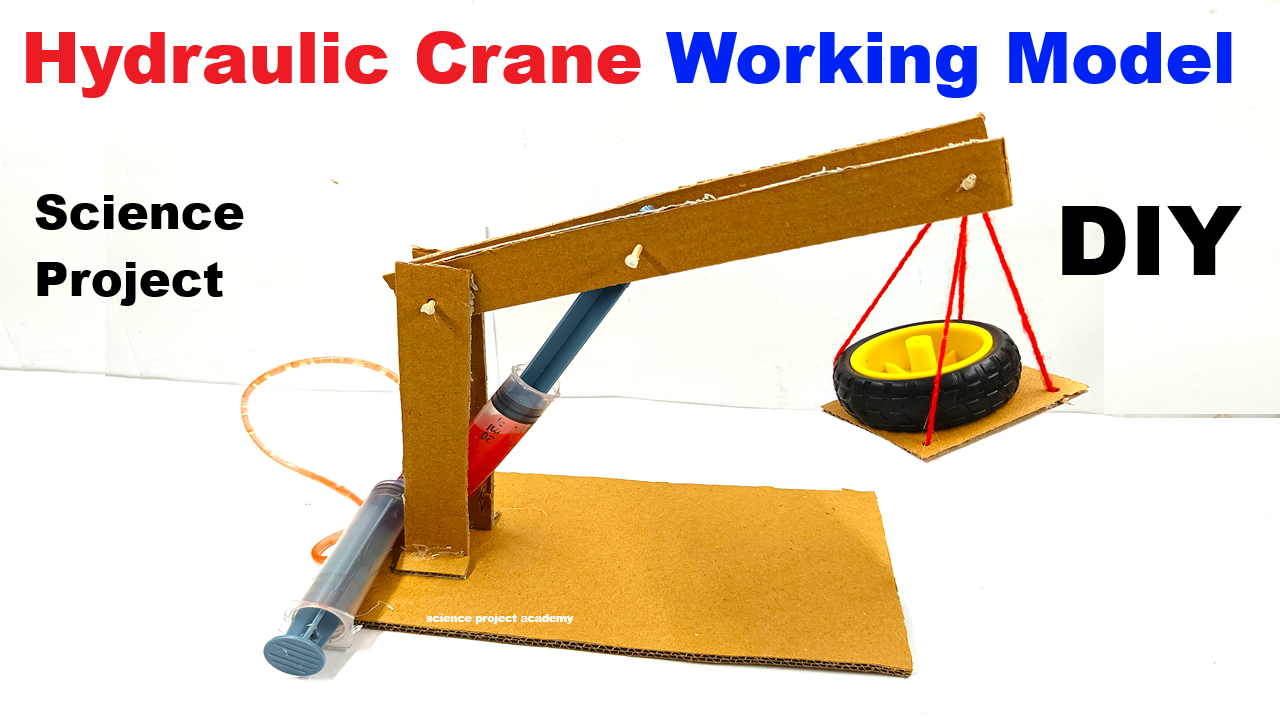This model demonstrates how hydraulic pressure can lift heavy objects using syringes filled with water—mimicking how real cranes operate in construction and industries.
This hydraulic crane works on Pascal’s Law, which states that pressure applied to a fluid is transmitted equally in all directions.
The syringes use water to transfer pressure, which moves the crane’s arm and lifts objects. This concept is used in real construction cranes, brakes, and heavy machines.

Materials Required:
- 3 or 4 syringes (10 ml or 20 ml each)
- Plastic tubing (fits snugly on syringe tips)
- Cardboard (for crane base, arm, and structure)
- Glue gun or Fevicol
- Scissors/cutter
- Skewers/sticks or straws (for rotating joints)
- Water (to fill syringes)
- Small paper cup or hook (to lift objects)
- Color paper for decoration (optional)
Video Step-by-Step Instructions:
1. Build the Base and Vertical Support:
- Cut a sturdy cardboard base.
- Attach a vertical stand (like a tower) to it using cardboard.
2. Create the Crane Arm:
- Cut a long rectangular strip from cardboard for the crane arm.
- Attach it to the vertical tower using a skewer or straw so that it rotates or lifts.
3. Install Syringe Mechanism:
- Fill two syringes with water, connect with plastic tubing tightly (remove air bubbles).
- One syringe will be outside the model (controller), and the other will be mounted where movement is needed.
Examples:
- Use one syringe pair to lift the main boom up and down.
- Use another syringe pair to control the grabber/hook.
4. Add Load Hook/Cup:
- Attach a small paper cup or hook at the end of the crane arm.
- You can place small objects (erasers, pebbles) in it to lift.
5. Test the Crane Movement:
- Push/pull the controller syringes to move the crane parts.
- Watch how water transfers pressure and moves the other syringe — lifting the arm or hook.

